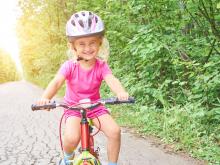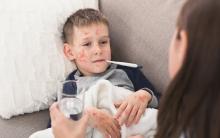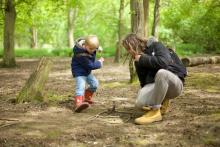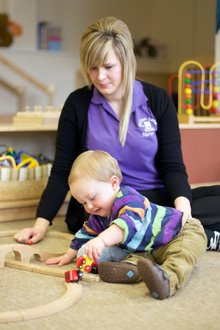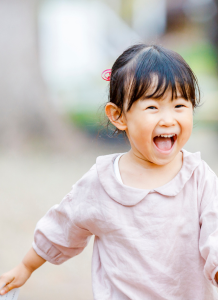By Dorothy Lepkowska-Hudson
However much we may love a hot summer, extremely hot temperatures can make babies and young children poorly and very uncomfortable.
While enjoying the fun of the paddling pool, the beach or playing in the park, parents need to ensure their children are properly protected and kept as cool as possible, during the day and at night – especially as very young children can’t always articulate how they are feeling.
Babes in the shade
Babies under six months old should be kept out of direct sunlight because their skin is still too fragile to be able to protect them from the sun.
But older infants also need to be kept in the shade or indoors, particularly during 11am and 3pm when the sun is at its most intense. A parasol or sunshade attached to a pram or buggy, and a hat, will keep the sun off.
Don't cover prams or buggies with shawls or coverings as this can stop air circulating.
Keep up the suncream
Apply sunscreens regularly, especially after your child has been in water.
Sunscreens should have a sun protection factor (SPF) of at least 30 for children and at least 50 for babies and must protect against both UVA and UVB rays.
Children who have pale skin, freckles or red or fair hair are particularly prone to burning in the sun. Remember that the sand and water can reflect the sun’s rays on to your skin.
Water water everywhere
Dehydration is one of the main risks in very hot weather, and your child will need plenty of fluids to stop this from happening.
Breastfeeding mums don’t have to supplement feeds with water, but they might find their babies want to feed more often.
Older infants should be given cooled boiled water as well as milk.
Toddlers can be given water or diluted fruit juice to vary their fluid intake.
Ice lollies and salads will be also help with hydration. Keep a cup of water at the side of the bed for young children who wake up feeling thirsty.
Paddling pools are a great way of keeping littles on cool but make sure you supervise them while at play.
A bath in cool water before bedtime can help them get to sleep, and you might want to keep nightwear to a minimum.
Cooling the bedroom
Keep windows and curtains closed during the day and only open windows once the air outside has cooled down later in the day or evening.
Take care with open windows if you have toddlers around and ensure they can't climb up towards them.
Use a fan at night if the room is too warm.
One tip is to hang cold wet towels in the room at night, particularly by the window, and the evaporating water will help the air to cool.
If the room is above 24C it is fine for babies and childrent to sleep in just a nappy or pants.
But if they prefer bedclothes then just use a muslin or thin cotton blanket - and don't swaddle during hot weather as they won't be able to kick the blanket off if they get hot.
Thin cotton bedclothes are the most cooling and comfortable against a child’s skin.
When checking to see if your baby is too hot, check their chest or back of the neck. Don't check their feet or hands as these are normally cooler than the rest of the body anyway.
Check for dehydration
If your child has been playing out in the sun for a while you should look out for signs of dehydration and heatstroke. If your child isn’t peeing very often, or they seem overly tired, they might be dehydrated.
Other signs to look out for is complaining of feeling thirsty, few or no tears when they cry, blotchy feet and hands, and dry mouth and lips. Dehydration can also bring on vomiting or diarrhoea.
Offer your child drinks often and encourage them to take fluids. Food will high water content such as cucumber and watermelon taste delicious and will make up for some of that lost body fluid.
The symptoms of heatstroke, meanwhile, include loss of appetite and feeling sick, cramps, intense thirst and headache.
A child showing these signs should be moved to a cool place and given plenty of water. A spray or sponge with cool water, or a fan, will help to cool them down.
After sun
If you discover your child is sunburnt after a day outdoors, this can usually be treated at home by putting your child in a cool bath or shower and using after-sun cooling lotions such as aloe vera to ease the discomfort.
Give your child plenty to drink and painkillers, such as ibuprofen if they’re in pain.
However, in all of the above cases, medical assistance should be sought if your child continues to feel unwell, or their symptoms change of deteriorate.
This includes blistering of the skins, getting the chills, or running a high temperature, and dizziness or headaches.
Further reading:
NHS: Heatwave: How to cope in hot weather
This article first appeared on Family Corner in July 2018 and was updated in July 2022
Where next?
5 fun and educational water play ideas
9 ways to help your child develop robust mental health



